After paying admission fees at the ticket office, we approached Angkor Wat via its main entrance – a 350 m. (1,150 ft.) long sandstone causeway (a later addition which possibly replacing a wooden bridge) to the west which connects the western gopura to the temple proper.
Along the way are three ruined towers, naga balustrades and six sets of steps leading down to the city on either side. The western entrance is, by far, the largest. To the east, access to the temple is via an earth bank.
Each side of the causeway also features a library with gopuras (entrances) at each of the cardinal points, in front of the third set of stairs from the entrance, and a pond (later additions to the design) between the library and the temple itself. The cruciform terrace (also a later addition), guarded by lions, connects the causeway to the central structure.
Angkor Wat, lying 5.5 kms. (3.4 mi) north of the modern town of Siem Reap and a short distance south and slightly east of the previous capital (which was centered at Baphuon), was built by the Khmer King Suryavarman II in the early 12th century in Yaśodharapura (present-day Angkor), the capital of the Khmer Empire, as his state temple and eventual mausoleum.
The temple is admired for the grandeur and harmony of the architecture, its decoration and for the numerous devatas (there are more than 1,796 depictions of devata in the present research inventory) adorning its walls. Above all, the temple has drawn praise for the harmony of its design.
Larger devata images, all full-body portraits measuring approximately 95 cms. (37 in.) to 110 cms. (43 in.), are incorporated more prominently at every level of the temple from the entry pavilion to the tops of the high towers. Small, 30 cm. (12 in.) to 40 cm. (16 in.) apsara images were used as decorative motifs on pillars and walls.
Angkor Wat’s extensive decoration, one of the causes for its fame, is integrated with the architecture of the building and predominantly takes the form of bas-relief friezes. Virtually all of its surfaces, columns, lintels and even roofs are carved, with miles of reliefs illustrating scenes from Indian literature including unicorns, griffins, winged dragons pulling chariots as well as warriors following an elephant-mounted leader and celestial dancing girls with elaborate hair styles.
One gallery wall alone is decorated with almost 1,000 sq. m. of bas reliefs. Besides the temple proper, its outer wall also enclosed three rectangular galleries (each raised above the next), the city and, to the north of the temple, the royal palace. Inside the temple, ropes and wooden steps have been introduced to protect the bas-reliefs and floors.
Here are some interesting trivia regarding this temple complex:
- It is the largest religious monument in the world
- Angkor Wat is the prime example of the high classical style of Khmer architecture—the Angkor Wat style to which it has given its name. Architecturally, the elements characteristic of the style include: the ogival, redented towers shaped like lotus buds; half-galleries to broaden passageways; axial galleries connecting enclosures; and the cruciform terraces which appear along the main axis of the temple. Typical decorative elements are devatas (or apsaras), bas-reliefs, and on pediments extensive garlands and narrative scenes.
- A powerful symbol of Cambodia and a source of great national pride, a depiction of Angkor Wat has been a part of Cambodian national flags since the introduction of the first version circa 1863.
- It is the country’s prime attraction for visitors. Since the 1990s, Angkor Wat has become a major tourist destination. In 1993, there were only 7,650 visitors to the site but, by 2004, (according to government figures) 561,000 (approximately 50% of all foreign tourists in Cambodia) foreign visitors had arrived in Siem Reap province, most of whom visited Angkor Wat, increasing to over a million in 2007 and over two million by 2012. In 2013, Angkor Wat received over two million foreign tourists.
- The temple’s original name is unknown as neither the foundation stela nor any contemporary inscriptions referring to the temple have been found. It may have been known as “Varah Vishnu-lok” (Barom Visnulōk, which means the sacred dwelling of Vishnu) or Parama Vishnuloka (Sanskrit), after the presiding deity. The modern name, Angkor Wat (alternate name: Nokor Wat) means “Temple City” or “City of Temples.” In Khmer; Angkor meaning “city” or “capital city.” It is a vernacular form of the word nokor (which comes from the Sanskrit word nagara). Wat is the Khmer word for “temple grounds,” also derived from Sanskrit vāṭa, meaning “enclosure.”
- Constructed by Khmer King Suryavarman II for the Khmer Empire, it was originally, in a break from the Shaiva tradition of previous kings, a Hindu temple dedicated to the god Vishnu but was gradually transformed, towards the end of the 12th century, into a Buddhist
- As the best-preserved temple at the site, Angkor Wat is the only one to have remained a significant religious center since its foundation.
- The entire city of Angkor used up far greater amounts of stone than all of the Egyptian pyramids combined.
- Angkor occupied an area significantly greater than modern-day Paris.
- Sandstone, rather than brick or laterite, was used as the main building material. Sandstone blocks were used for most of the visible areas while laterite was used for the outer wall and for hidden structural parts. Sandstones, as smooth as polished marble, were laid without mortar, with very tight joints that were sometimes hard to find. In some cases, the blocks were held together by mortise and tenon joints while, in others, they used dovetails and gravity. Presumably, the blocks were put in place by a combination of elephants, coir ropes, pulleys and bamboo scaffolding.
- Unlike the Egyptian pyramids which use limestone quarried barely 0.5 km. (0.31 mi.) away all the time, the entire city of Angkor was built with sandstone quarried 40 kms. (25 mi.) or more away. This sandstone had to be transported from Mt. Kulen, a quarry approximately 40 kms. (25 mi.) to the northeast.
- It was designed to represent Mount Meru, home of the devas(gods) in Hindu mythology. The central quincunx of towers symbolizes the five peaks of the mountain while the walls and moat symbolize the surrounding mountain ranges and ocean.
- Angkor Wat is a unique combination of two basic plans of Khmer temple architecture – the temple mountain (the standard design for the empire’s state temples) and the later concentric galleried temple.
- Compared to earlier work, the statuary of Angkor Wat is considered conservative, being more static and less graceful.
- Unlike most Angkorian temples, Angkor Wat is oriented to the west and scholars are divided as to the significance of this. Angkor Wat may relate to the Greek and Roman architecture record in terms of the west rather than east orientation of the temple.
- It is the southernmost of Angkor’s main sites.
- The temple’s bas-reliefs proceeds in a counter-clockwise direction (prasavya in Hindu terminology), the reverse of the normal order.
- Among the Angkor temples, Angkor Wat is unusual in that, although it was largely neglected after the 16th century, it was never completely abandoned.
- According to legend, the construction of Angkor Wat was ordered by Indra to serve as a palace for his son Precha Ket Mealea. According to Zhou Daguan, a 13th-century Chinese traveler, some believed that the temple was built by a divine architect in a single night.
- Japanese Buddhist pilgrims who established small settlements, alongside Khmer locals, thought that Angkor Wat was the famed Jetavana garden of the Buddha, which originally located in the kingdom of Magadha, India. Fourteen inscriptions (the best-known tells of Ukondafu Kazufusa, who celebrated the Khmer New Year at Angkor Wat in 1632) discovered in Angkor area, dated from the 17th century, testifies to this.
- As with most other ancient temples in Cambodia, a combination of plant overgrowth, fungi, ground movements, war damage and theft have extensively destroyed many elements of the temple’s design including gilded stucco on the towers, gilding on some figures on the bas-reliefs, and wooden ceiling panels and doors. Around 20% of the devatas are in very poor condition, mainly because of natural erosion and deterioration of the stone but, also in part, due to earlier restoration efforts. However, compared to the rest of Cambodia’s temple ruins, it has also received the most attentive restoration. So far, other than some graffiti, the influx of tourists has caused relatively little damage.
- Some additional funds for the temple’s maintenance has been provided by tourism. As of 2000, approximately 28% of ticket revenues across the whole Angkor site was spent on the temples (although most work is carried out by teams sponsored by foreign governments rather than by the Cambodian authorities).
- A number of countries such as France, Japan, Germany and China are currently involved in various Angkor Wat conservation projects. The German Apsara Conservation Project (GACP) is working to protect the devatas, and other bas-reliefs which decorate the temple, from damage.
- Angkor Wat the location for some key scenes from the 2001 film Lara Croft: Tomb Raider (the first major motion picture to be shot in Cambodia since Lord Jim in 1964), when Angelina Jolie arrives in a floating village in front of the temple. She exits the village and then enters the temple to meet a holy monk who heals her injured arm and lends her a phone.
- Angkor Wat was also the setting for the final scenes of the 2000 In the Mood for Love, a classic Hong Kong romantic drama from Wong Kar-wai,.
Here is the historical timeline of the temple:
- In the first half of the 12th century, the initial design and construction of the temple took place during the reign of Suryavarman II (ruled 1113 – c. 1150).
- Shortly after the king’s death, work seems to have ended, leaving some of the bas-relief decoration unfinished.
- In 1177, approximately 27 years after the death of Suryavarman II, Angkor was sacked by the Chams, the traditional enemies of the Khmer.
- Thereafter, King Jayavarman VII restored the empire and established a new capital and state temple (Angkor Thom and the Bayon respectively) a few kms. to the north.
- Towards the end of the 12th century, Angkor Wat was gradually transformed, from a Hindu centre of worship, to Buddhism, which continues to the present day.
- In 1586, António da Madalena, a Portuguese friar visited the temple, one of the first Western visitors to do so.
- In the mid-19th century, French naturalist and explorer Henri Mouhot effectively rediscovered the temple and popularized the site in the West through the publication of travel notes.
- On August 11, 1863, the splendid artistic legacy of Angkor Wat and other Khmer monuments in the Angkor region led directly to France adopting Cambodia as a protectorate, invading Siam to take control of the ruins. This quickly led to Cambodia reclaiming lands in the northwestern corner of the country that had been under Siamese (Thai) control since AD 1351 (Manich Jumsai 2001), or by some accounts, AD 1431.
- Between 1889 and 1937, the original temple site was presented in French colonial and universal exhibitions in Paris and Marseille.
- From c. 1880 to the mid-1920s, Angkor Wat’s aesthetics were on display in the musée Indo-chinois, a plaster cast museum of Louis Delaporte which existed in the Parisian Trocadero Palace.
- By 1885, a French exploration commission (who drew up a list of principal monuments) had worked up a chronology of the rulers and developed the outlines of a description of the civilization that had produced the temple complex. The true history of Angkor Wat was pieced together from stylistic and epigraphicevidence accumulated during subsequent clearing and restoration work. Subsequent missions copied inscriptions written on Angkor buildings so that scholars might translate them and learn something of Angkor’s history.
- In 1898 the French decided to commit substantial funds to Angkor’s preservation.
- The 20th century saw considerable restoration of Angkor Wat. Centuries of neglect had permitted the jungle to recapture many of the more significant structures and, gradually, teams of laborers and archaeologists pushed back the jungle, freed buildings from the embrace of huge banyan and silk-cotton trees (which might have crushed them to destruction) and exposed the expanses of stone, permitting the sun once again to illuminate the dark corners of the temple.
- In 1934, the conservator George Trouvé, excavating the pit beneath the central shrine, finds a sacred foundation deposit of gold leaf, 2 m. above ground level.
- On November 9, 1953, Cambodia gained independence from France and, since that time, has controlled Angkor Wat.
- In the 1960s, a major restoration of Angkor was undertaken
- During the 1970s and 1980s, work was interrupted by the Cambodian Civil War and Khmer Rouge control of the country but, during this period, relatively little damage was done. However, camping Khmer Rouge forces did use, for firewood, whatever wood remained in the building structures plus a shoot-out, between Khmer Rouge and Vietnamese forces, put a few bullet holes in a bas relief.
- In the late 1980s and early 1990s, art thieves, working out of Thailand, claimed almost every head that could be lopped off the structures, including reconstructions.
- Between 1986 and 1992, as France did not recognize the Cambodian government at the time, the Archaeological Survey of India carried out restoration work on the temple .
- In 1992, following an appeal for help by Norodom Sihanouk, Angkor Wat was listed in UNESCO’s World Heritage in Danger (later removed in 2004) and World Heritage Site
- Between 1990 and 2016, the site was managed by the private SOKIMEX group which rented it from the Cambodian government.
- In 1994, zoning of the area was set up to protect the Angkor site.
- In 1995, APSARA was established to protect and manage the area.
- In 1996, a law to protect Cambodian heritage was passed.
- In 2005, a Japanese team completed restoration of the north library of the outer enclosure.
- In 2008, World Monuments Fund began conservation work on the Churning of the Sea of Milk Gallery after several years of studies on its condition.
- In 2012, the main phase of restoration work ended.
- In 2012, at the ASEAN Tourism Forum, it was agreed that Borobudur and Angkor Wat would become sister sites and the provinces sister provinces.
- In 2013, the installation of finials on the roof of the gallery was finished.
- In December 2015, a research team from University of Sydney announced that they had found a previously unseen ensemble of buried towers built and demolished during the construction of Angkor Wat, as well as massive structure of unknown purpose on its south side and wooden fortifications.
Here are some interesting trivia regarding the temple’s design and construction:
- The monument was made out of 5 million to 10 million sandstone blocks with a maximum weight of 1.5 tons each.
- The temple sits on a site measuring 162.6 hectares (1,626,000 m2; 402 acres).
- The 3.6 km. (2.2 mi.) long outer wall, measuring 1,024 m. (3,360 ft.) by 802 m. (2,631 ft.) and is 4.5 m. (15 ft.) high, is surrounded by a 30 m. (98 ft.) apron of open ground and a moat 190 m. (620 ft.) wide and over 5 kms. (3 mi.) in perimeter. It enclosed a space of 820,000 sq. m. (203 acres) and was built with perishable materials rather than of stone, so nothing remains of them except the outlines of some of the streets. Most of the area is now covered by forest.
- The outer gallery measures 187 m. (614 ft.) by 215 m. (705 ft.)
The temple itself, standing on a terrace raised higher than the city, is made of three rectangular galleries (each with a gopura at each of the points) rising to a central tower (aligned to the morning sun of the Spring Equinox), each level higher than the last. The two inner galleries each have towers at their corners, forming a quincunx with the central tower.
A multi-armed statue of Vishnu (known as Ta Reach), under the southern tower, originally have occupied the temple’s central shrine. Galleries, with square pillars on the outer (west) side and a closed wall on the inner (east) side, run between the towers as far as the two “elephant gates,” entrances on either side of the gopura that are large enough to admit these animals.
Lotus rosettes decorated the ceiling between the pillars; dancing figures on the west face of the wall; and balustered windows, dancing male figures on prancing animals, and devatas (including the only one, at the south of the entrance of the temple, showing her teeth) at the east face of the wall.
Another cruciform terrace, again a later addition, connects the second and inner galleries to each other and to two flanking libraries. Devatas, singly or in groups of up to four, abound on the walls from the second level upwards.
The 100 m. (330 ft.) by 115 m. (377 ft.) second-level enclosure, probably originally flooded to represent the ocean around Mount Meru, has three very steep sets of steps (representing the difficulty of ascending to the kingdom of the gods) on each side leading up to the corner towers and gopuras of the Bakan, the 60 m. (200 ft.) square inner gallery with axial galleries connecting each gopura with the central shrine, and subsidiary shrines located below the corner towers.
The motif of the body of a snake, ending in garudas (heads of lions), decorate the roofings of the galleries while carved lintels and pediments decorate the entrances to the galleries and to the shrines.
The tower above the central shrine, rising 43 m. (141 ft.) to a height of 65 m. (213 ft.) above the ground, is unlike those of previous temple mountains as this central tower is raised above the surrounding four. The shrine, originally open on each side and occupied by a statue of Vishnu, was walled in when the temple was converted to Theravada Buddhism (the new walls featuring standing Buddhas).
The outer gallery, with pavilions rather than towers at the corners, is open to the outside of the temple, with columned half-galleries extending and buttressing the structure.
The outer gallery is connected to the second enclosure on the west side via the Preah Poan (the “Hall of a Thousand Gods”), a cruciform cloister. The cloister, whose north and south have libraries, marks out four small courtyards which may originally have been filled with water.
A series of large-scale scenes, mainly depicting episodes from the Hindu epics the Ramayana and the Mahabharata, are found at the inner walls of the outer gallery.
The western gallery, from the north-west corner anti-clockwise, shows the Battle of Lanka (from the Ramayana), in which Rama defeats Ravana; and the Battle of Kurukshetra (from the Mahabharata), showing the mutual annihilation of the Kaurava and Pandava clans. The only historical scene at the southern gallery is a procession of Suryavarman II, then the 32 hells and 37 heavens of Hinduism.
The Churning of the Sea of Milk, one of the most celebrated scenes on the eastern gallery, shows 92 asuras and 88 devas using the serpent Vasuki to churn the sea under Vishnu’s direction, followed by Vishnu defeating asuras (a 16th-century addition). The northern gallery shows Krishna’s victory over Bana.
Over the centuries, Buddha images have been left in the cloister by pilgrims. Although most have now been removed, we noticed that some still remain and many inscriptions, mostly written in Khmer but others in Burmese and Japanese, relate the good deeds of these pilgrims.
Angkor Wat: Angkor, Siem Reap Province, Cambodia. Coordinates: 13°24′45″N 103°52′0″E.

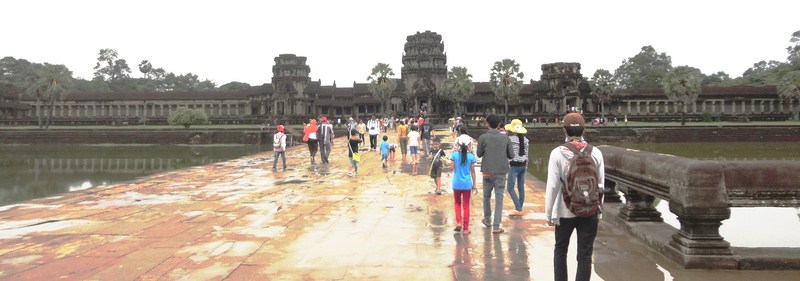

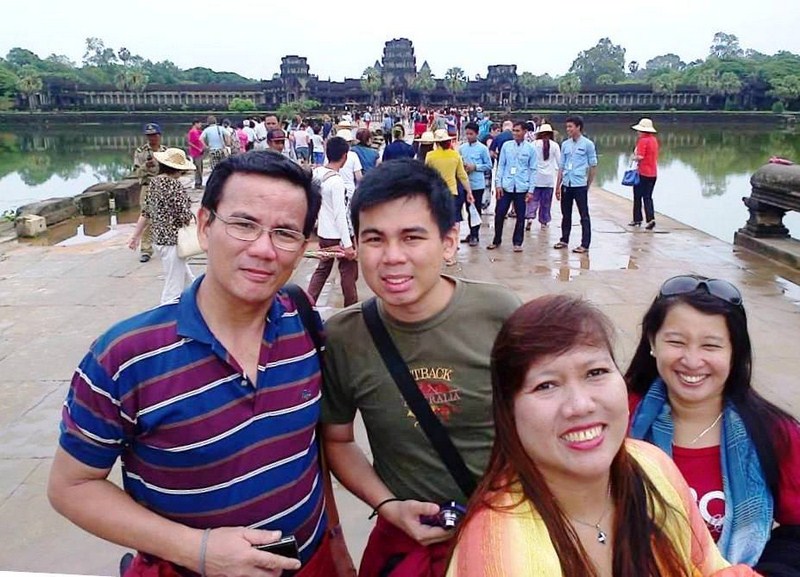

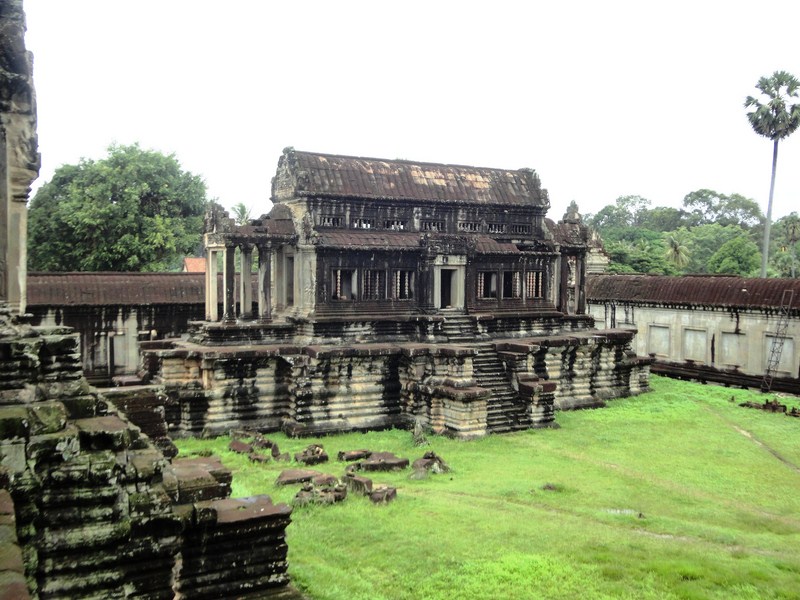
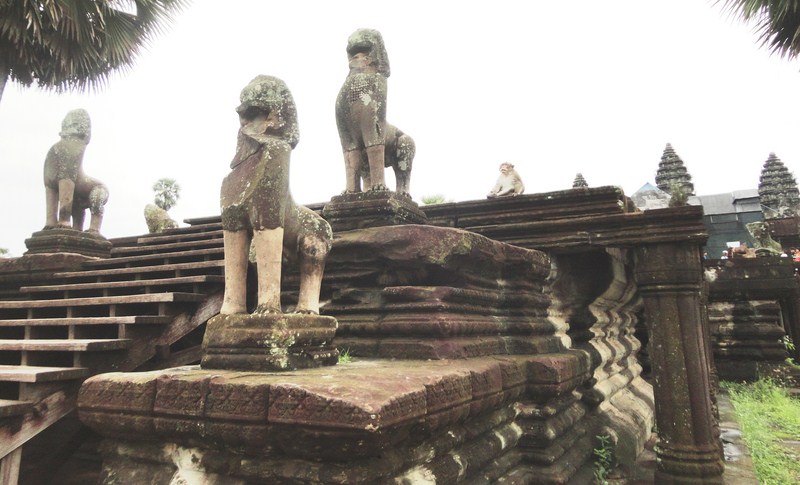
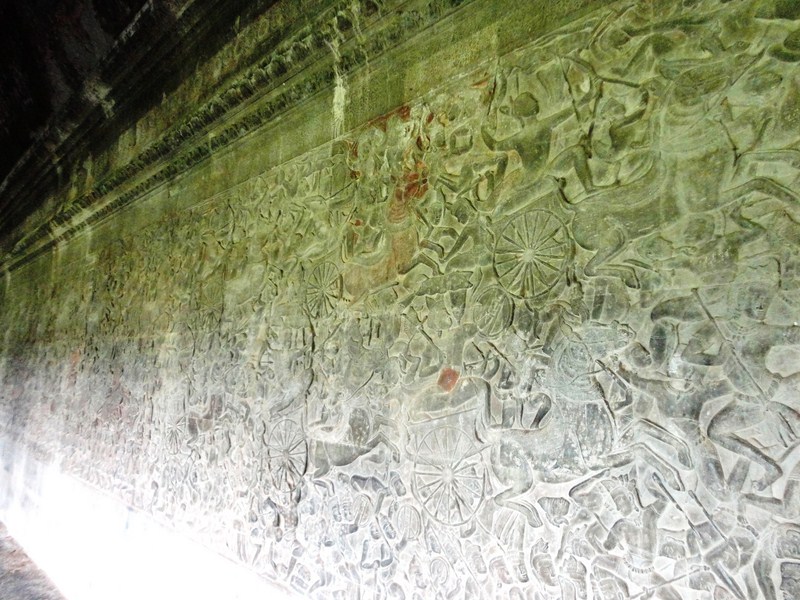
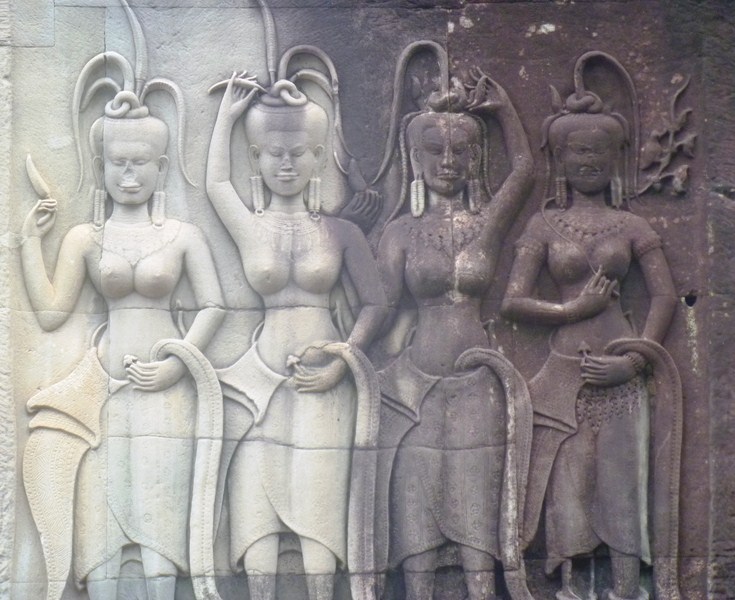
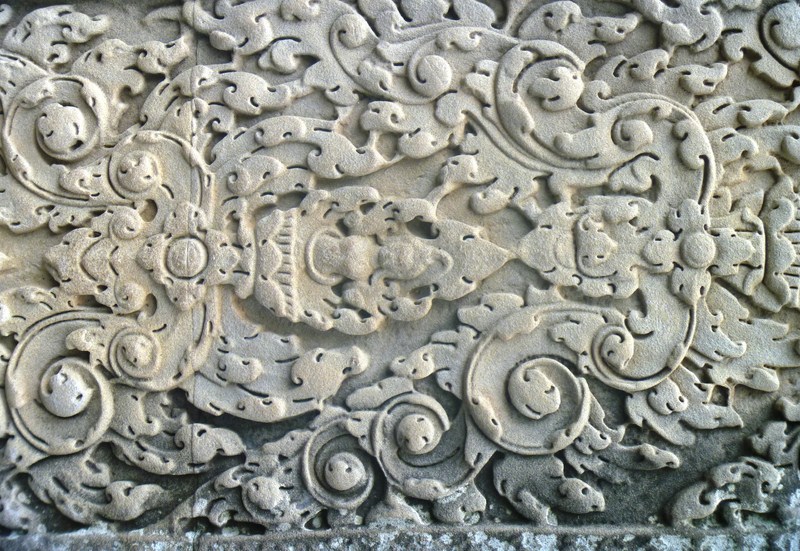
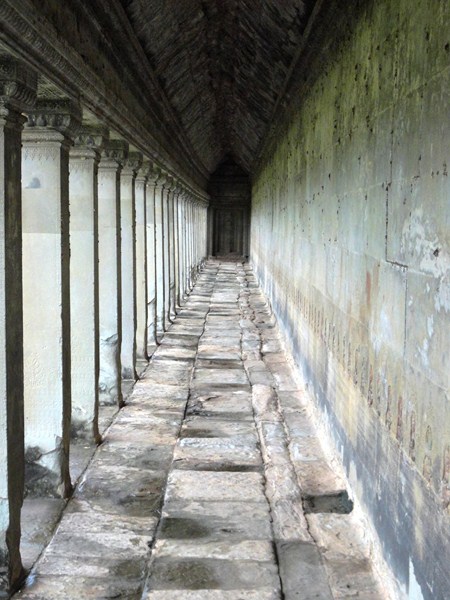
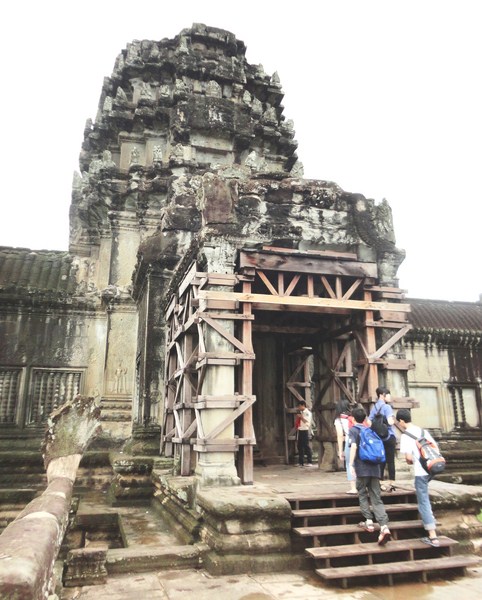
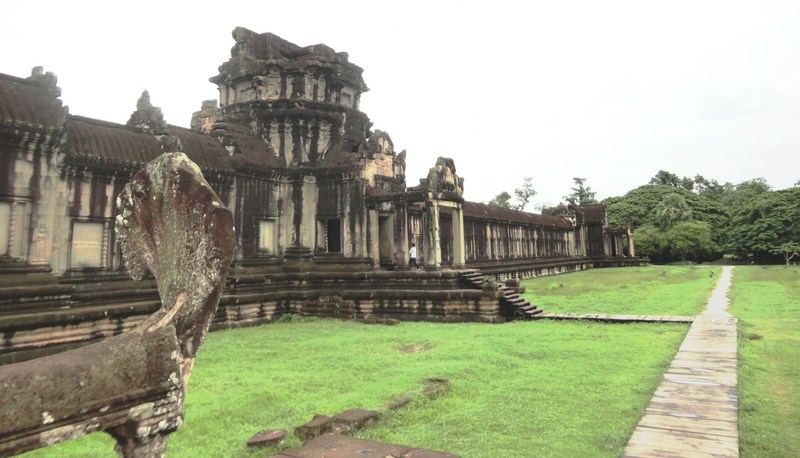
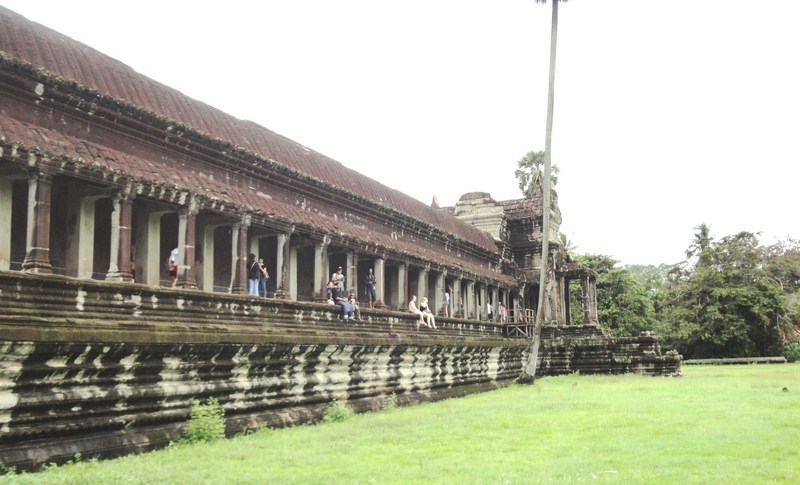
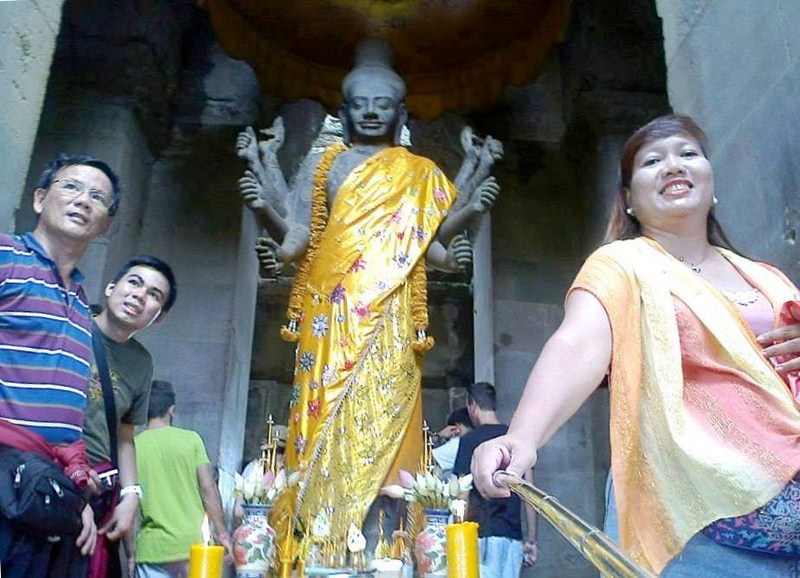
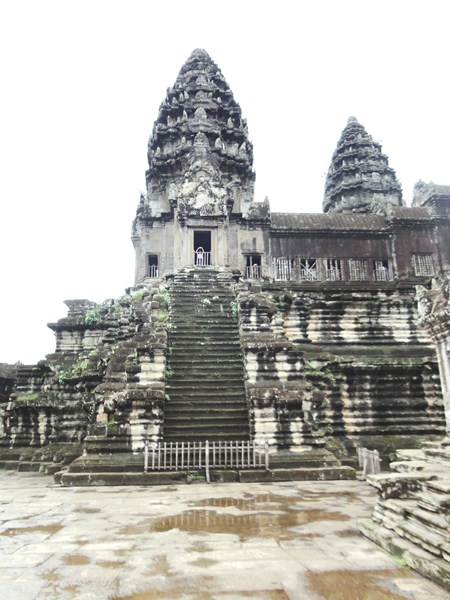
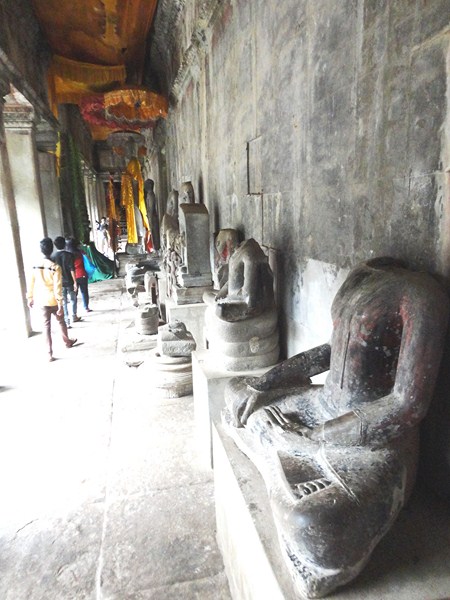
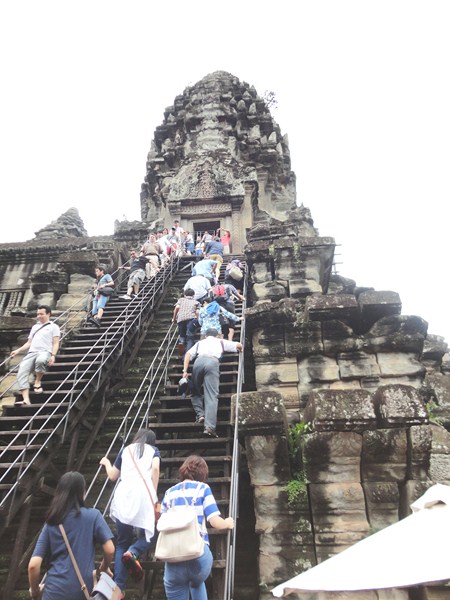

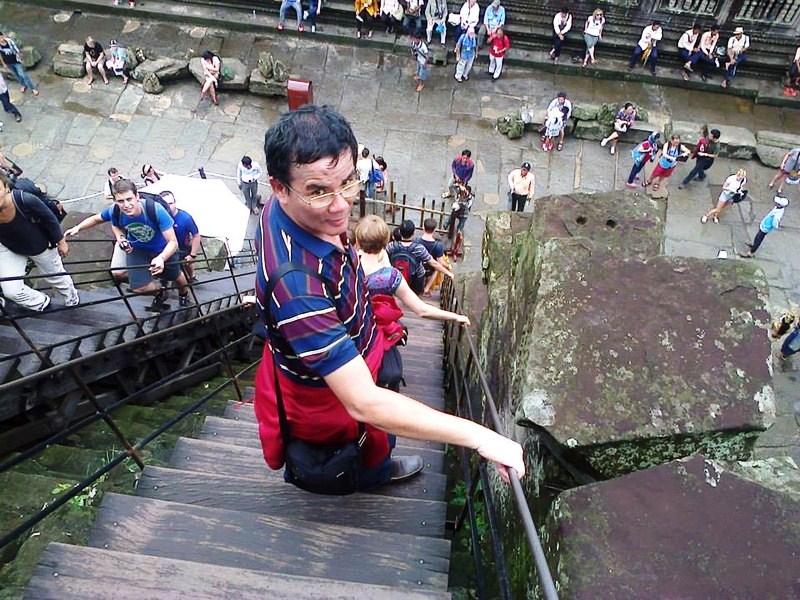
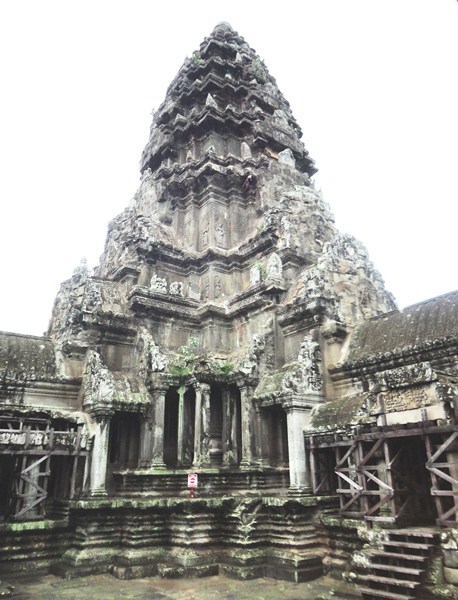
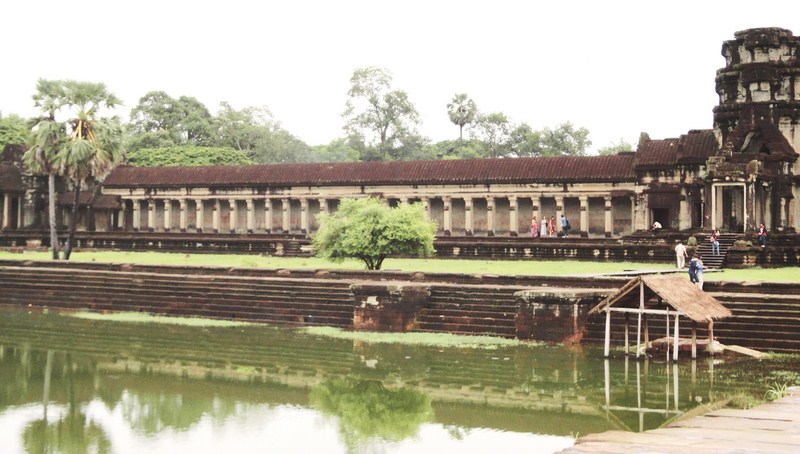
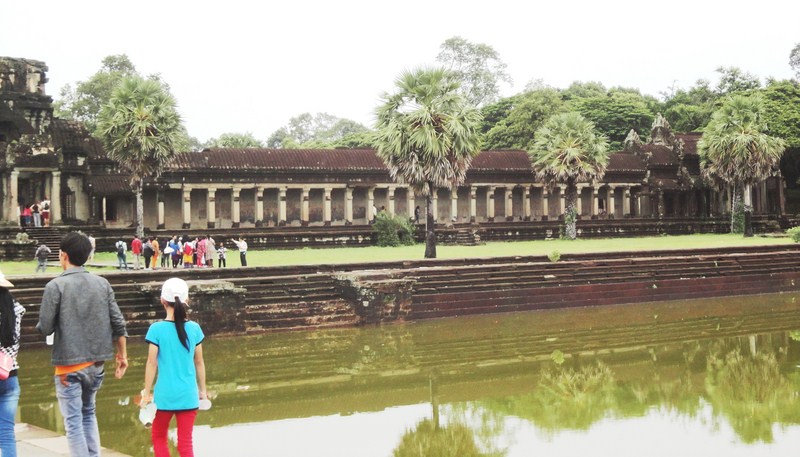
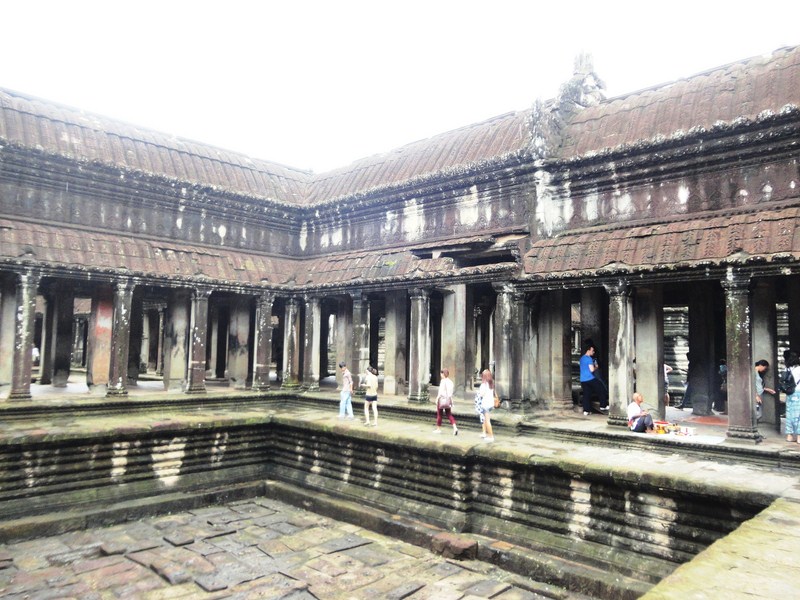
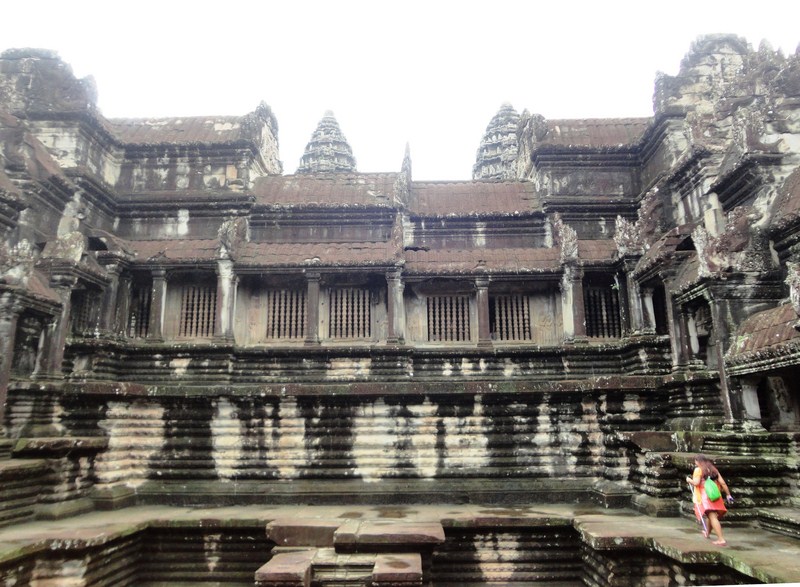
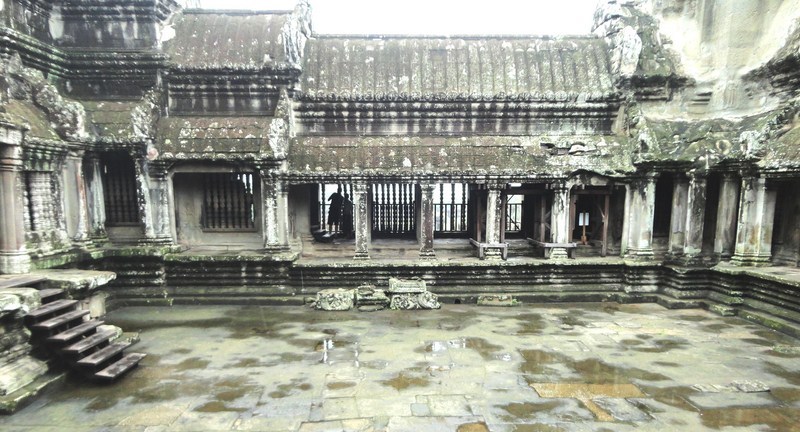
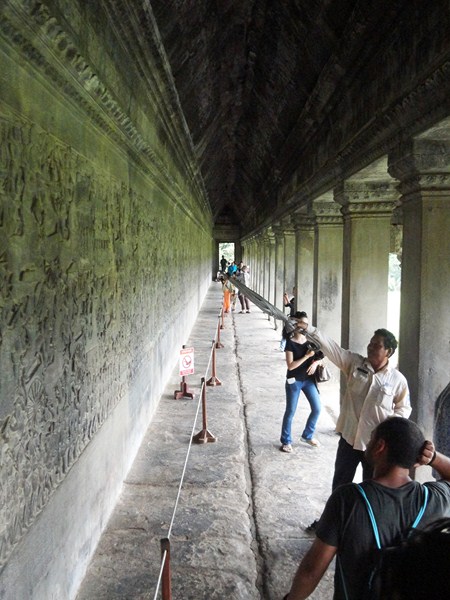
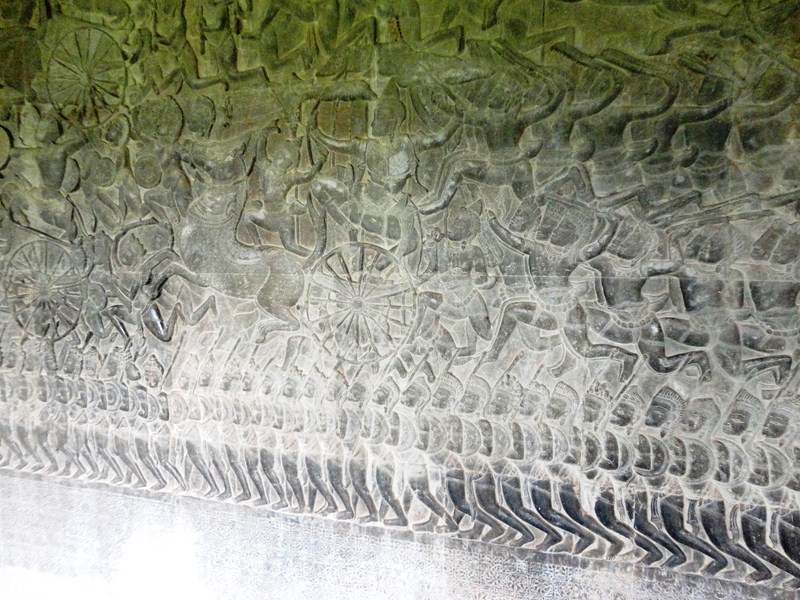
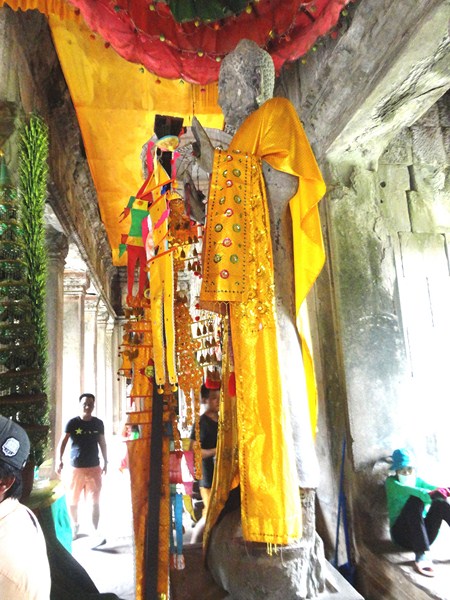
Pingback: Bantay Kdei (Siem Reap, Cambodia) – B.L.A.S.T. – Live Life to the Fullest ……… Don't Stay Put
Pingback: Thommanon Temple (Siem Reap, Cambodia) – B.L.A.S.T. – Live Life to the Fullest ……… Don't Stay Put